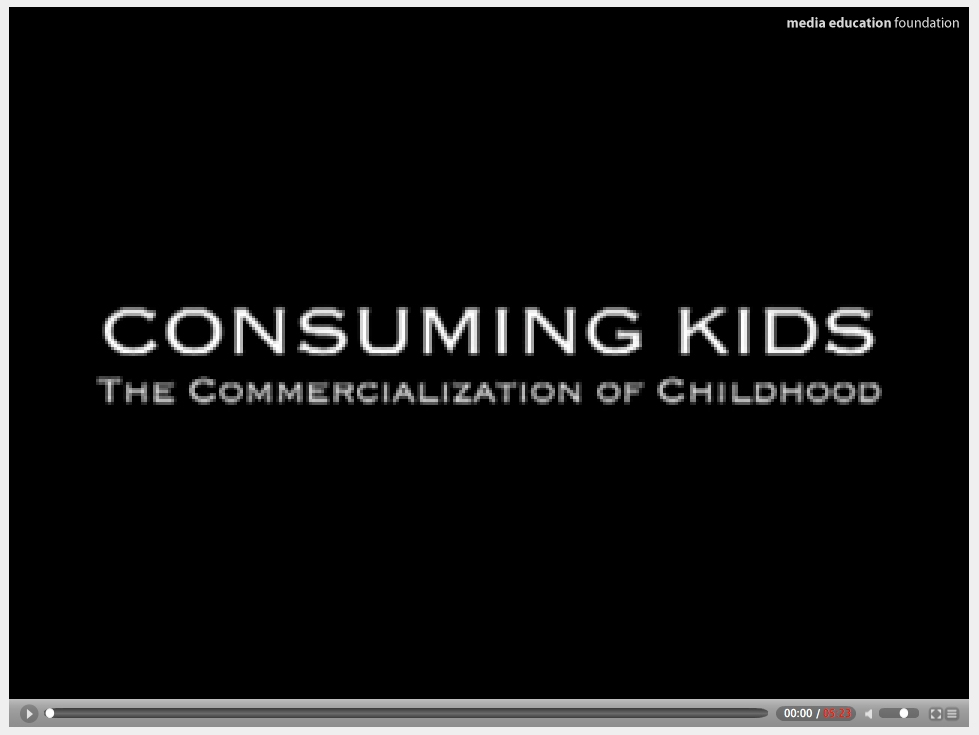 | Adriana Barbaro and Jeremy Earp |
| Consuming Kids: The Commercialization of Childhood |
Adriana Barbaro and Jeremy Earp work for the Media Education Foundation; Barbaro is the Director-Producer of Consuming Kids, and Earp is MEF’s Director of Production. MEF states that its mission is to produce and distribute “documentary films and other educational resources to inspire critical reflection on the social, political, and cultural impact of American mass media.” Among its other documentary films are Beauty Mark: Body Image and the Race for Perfection; Dreamworlds 3: Desire, Sex, and Power in Music Video; and Blood and Oil, which respectively analyze America’s obsession with thinness and physical perfection; music videos’ portrayals of girls and women; and war’s relationship to the oil industry.
Like these other films, Consuming Kids asks questions concerning a specific sociopolitical phenomenon (in this case, advertising that is aimed at children), inviting the audience to reconsider the significance of something they likely encounter on a daily basis. Although this video is actually the film’s trailer, it gives a clear idea of how a documentary goes about investigating and analyzing its topic; the trailer functions as an outline describing a more extensive analytical piece.

| Starting a Conversation: Respond to “Consuming Kids” | |
 | In the text boxes below, respond to the analysis presented in the trailer by answering the following questions: |
Question
Like a written analysis, a documentary film interprets its evidence to construct a thesis for the audience. Given the main points and evidence presented in the trailer for Consuming Kids, what might the thesis of the film be? Try to summarize it in a sentence or two.
Question
Good analyses are shaped by urgent and compelling questions. What questions appear central to Consuming Kids? Make a brief list of other questions you feel the film should address in order to investigate the topic thoroughly.
Question
The trailer includes several examples of advertising aimed at children, both historical examples and current ones. How do these advertisements help the audience understand the issues under discussion? What do they suggest about the evolution of advertising aimed at children throughout the years?
Question
Images, audio, and video clips throughout the film trailer appear intended to shock the audience. Choose one such image — or two images presented near one another — and write about how they support one of the trailer’s specific main points.
Question
Since this is only a trailer and not the full documentary, a great deal of the film’s investigation and analysis are not included here. As an audience member, what questions do you have concerning the main points presented by the trailer? What additional evidence would you need before you agree with the conclusions presented by the trailer?